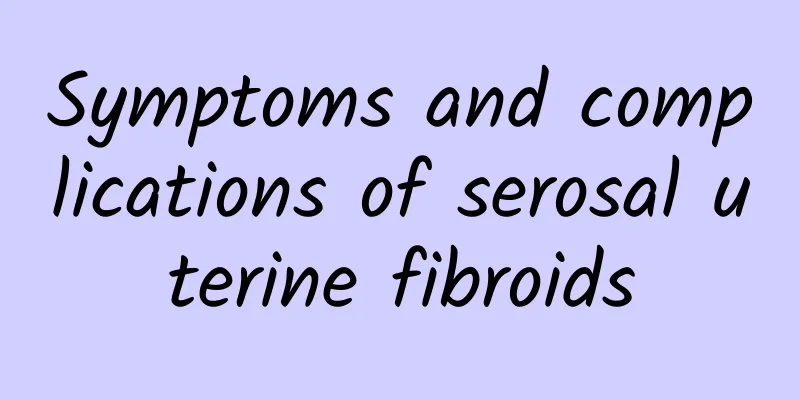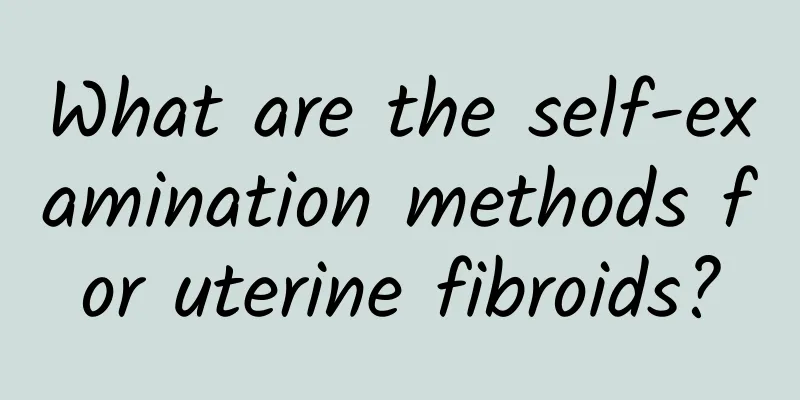Symptoms and complications of serosal uterine fibroids

|
The symptoms of subserosal uterine fibroids are what we need to grasp. Only by correctly grasping the symptoms of subserosal uterine fibroids can we help everyone get an accurate diagnosis and treatment. So, what are the symptoms of subserosal uterine fibroids? Subserosal uterine fibroids refer to most of the fibroids that grow and protrude from the surface of the uterine serosa, accounting for about 20-130% of fibroids. Subserosal uterine fibroids refer to most of the fibroids that grow and protrude from the surface of the uterine serosa. Between subserosal uterine fibroids and the muscle wall, small fibroids have little effect on women's menstrual changes and are difficult to detect. Some subserosal uterine fibroids do not have obvious symptoms until they grow larger, so it is difficult for many people to discover their disease. Myomas grow toward the uterine serosa and protrude from the surface of the uterus, accounting for about 20%. The surface of myomas is only covered by the uterine serosa. When the tumor continues to grow toward the serosa, only one pedicle is connected to the uterine muscle wall, becoming a pedunculated subserosal myoma, which is nourished by the blood vessels of the pedicle. Due to insufficient blood supply, it is easy to degenerate and necrotize. If the pedicle is twisted and broken, the myoma will fall off into the abdominal cavity or pelvic cavity, forming a free myoma. Subserous fibroids and small fibroids between the muscle wall often have no obvious menstrual changes. There is acute abdominal pain when the pedicle is torsion. When the fibroid turns red, the abdominal pain is severe and accompanied by fever. Lower abdominal swelling and back pain are common, and menstruation is aggravated. It can be touched that the hard and spherical mass is connected to the thin pedicle of the uterus and moves. Subserosal uterine fibroids and intramural fibroids usually do not have obvious menstrual changes. Acute abdominal pain occurs when the pedicle is twisted. When the subserosal uterine fibroids turn red, the abdominal pain is severe and accompanied by fever. Subserosal uterine fibroids are common in lower abdominal swelling and back pain, and menstruation is aggravated. This is usually difficult for patients to detect by themselves and is usually discovered accidentally during gynecological examinations. For the above-mentioned symptoms of subserosal uterine fibroids, we must actively grasp and correctly grasp the symptoms of subserosal uterine fibroids to help you get accurate diagnosis and active treatment to maximize the restoration of everyone's health. |
<<: What are the symptoms of uterine fibroids? How to prevent and treat uterine fibroids?
Recommend
Is it possible for women to have normal pelvic fluid accumulation due to their physiological characteristics?
Is it possible for women to have normal pelvic fl...
What are the treatments for vulvar leukoplakia?
What are the treatments for vulvar leukoplakia? W...
What are the early symptoms of pelvic inflammatory disease in women?
Pelvic inflammatory disease is a common gynecolog...
Can I eat green peppers if I have vaginitis?
Patients with vaginitis can usually eat sweet gre...
Is it necessary to cut out sugar to lose weight? Japanese nutritionist explains the myths and teaches you how to cook delicious multi-grain rice
In recent years, many women have actively tried t...
What are the hazards of cervicitis in women? 4 reasons can cause women to suffer from cervicitis
Speaking of women's troubles, cervicitis is d...
Long-term sitting requires vigilance against the cause of adnexitis
Many women in life think they are very clean, but...
If you cut fruits and put them in the refrigerator, will half of the nutrients be lost? Can fruits be put in the refrigerator? Nutritionist to answer
Office workers like to eat fruits, but they are v...
Precautions for treatment of patients with secondary amenorrhea
After secondary amenorrhea occurs, you should go ...
Onions cannot be eaten with apples, as they may induce thyroid enlargement?
It is April now, and onion season has arrived. Ho...
Can cervical erosion be cured by taking Chinese medicine?
Taking Chinese medicine may have a certain auxili...
How to improve the cure rate of abortion
Abortion is undoubtedly a huge blow to many femal...
New trend in hybrid fitness: pregnant women lifting weights sparks controversy
In September this year, Lea-Ann Ellison, an eight...
Fight cancer and lose weight with food! Homemade Healthy Vegetable Soup
Taiwanese artist Dongfang Billy, who suffered fro...
Obesity accelerates, causing cellulite to appear on thighs! 3 tips to effectively eliminate cellulite
Summer is here and more people are going swimming...









